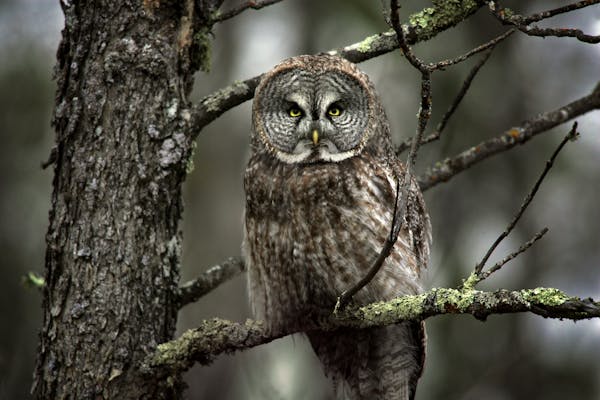No doubt acting on good intentions to get into Minnesota's outdoors more this year will make a healthier you.
What if there was an opportunity to achieve your outdoor goals while being a good steward of the resources you use and helping make healthier woodlands, too?
Some call that synergy a win-win.
Natural resource managers at Three Rivers Park District think the public has a significant role to help this winter to limit the impact of an invasive, nasty plant that, like many non-native troublemakers, looks benign but is a real threat.
With the help of the public, invasive species coordinator Emily Dunlap now is targeting one plant, a climbing vine called Oriental bittersweet, that is easily confused with its native counterpart, American bittersweet.
This week Dunlap met with a few volunteers at Elm Creek Park Reserve who are part of a survey just ramping up to identify and mark Oriental bittersweet for eradication before it is able to spread. It's an issue at parks like Baker in Maple Plain, Crow-Hassan near Rogers, Lake Rebecca in Rockford, and Carver in Victoria.
Spread, it does: The vine grows rapidly (up to 15 feet a year and, some, up to 5 inches thick) and can diminish the health of nearby trees and shrubs. Oriental bittersweet climbs in its thirst for sunlight, and limits it for others in its path. What's equally bad is a phenomenon known as girdling. It's like it sounds: The vine, like unwanted apparel, can wrap tightly around a tree, smothering its ability to use water and nutrients.
Oriental bittersweet sounds like something refined, something almost palatable. The woody vine showed up in the mid-19th century in the United States and was viewed then as an ornamental plant with its striking berries.
But it's unwelcome. If invasive species experts had a most-wanted list, the stealthy plant might be on it. It has been marked for death by the Minnesota Department of Agriculture. By law — the Minnesota Noxious Weed Law — it must be destroyed. It was first recognized as a noxious weed in Minnesota in 2011.
"It's the worst of the worst," said Dunlap of its "eradicate" status.
Unlike invasive buckthorn that is widespread and here to stay, Dunlap said wiping out Oriental bittersweet in Minnesota parkland is possible. The challenge, though, is similar to buckthorn: Its fruit is the super-spreader, eaten by birds that fly off and excrete the seeds elsewhere. The seeds germinate in late spring.
That is why the more survey volunteers afield, the better, Dunlap said.
"You never know where birds are going to put it," she added.
Dunlap said early detection and rapid response are fundamental to controlling invasive species, especially when time and resources are limited. She walks parts of the parks —sometimes remote areas — to show volunteers how to identify Oriental bittersweet.
"If you find that first infestation, you are a lot better off," Dunlap said.
Winter is best for tracking, she said, because the vine has dropped its leaves. Oriental and American bittersweets are easy to confuse, but their fruit is telltale. Oriental has yellow casings around its red fruit; American has orange casings. Also, on Oriental vines, the fruit is in the leaf axil where the leaf attaches to the stem. On American bittersweet, the fruit is at the end of the branches.
Dunlap trains volunteers and then gives them a map and survey area to hunt for the vine, which likes upland areas. Sometimes trackers will return to places where fruit was found in the last year.
Volunteers are given flags to mark vines and areas — even if they are unsure — for Dunlap to follow. Technology, too, has helped the fight. Many volunteers use an application, EDDMapS, for reporting and documenting information in real time. Dunlap, seasonal staff and Conservation Corps crews will need to revisit Oriental bittersweet sites with herbicides and cutting tools for multiple growing seasons before a new infestation is under control.
Dunlap leads survey groups on weekdays, and volunteers can survey alone on weekends, too. She has a few bedrock requests of helpers: that volunteers are comfortable off-trail, have an interest in plant identification, and bring attention to detail.
Many of her current volunteers on Oriental bittersweet detail have assisted other battles to improve habitat. They are appreciated commodities, Dunlap said. But the ranks of the conservation-minded could use more this new year — like every year. Contact Dunlap through e-mail (Emily.Dunlap@threeriversparks.org) to lend a needed hand.
Look east, she said, to see Oriental bittersweet's aggressiveness and why the work matters. Outcompeted, American bittersweet has become a "species of concern" in Connecticut.
"It is worrisome," Dunlap said.
Profar homers twice to lift San Diego to its 6th straight win, 6-4 over Baltimore
Former British Open champion Stewart Cink in the hunt at 3M Open





